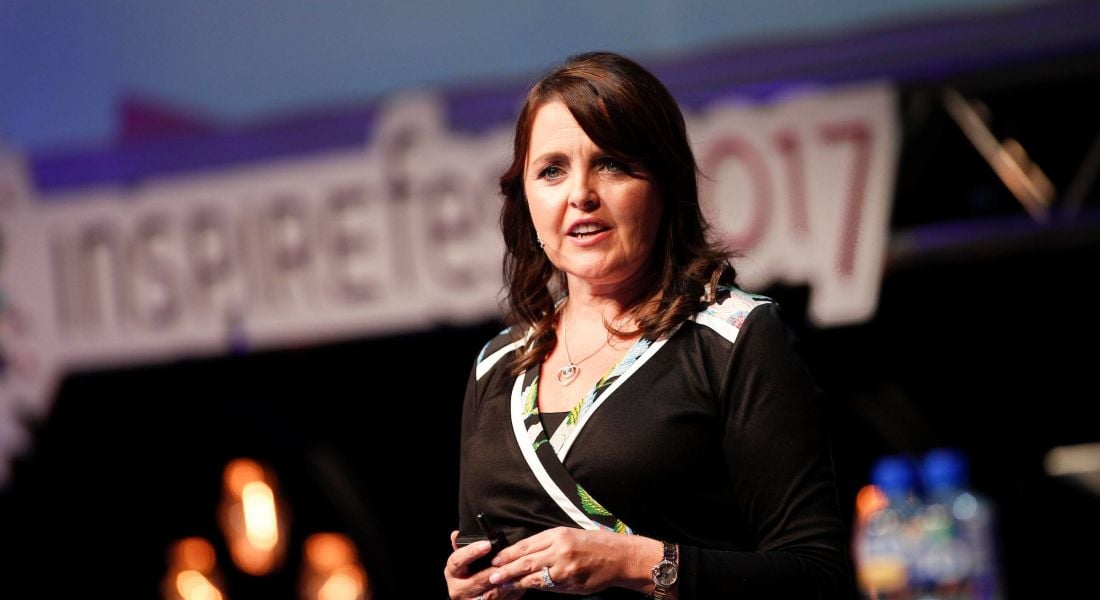With a growing body of work looking into gender imbalances, it might be good to find out the origins of lopsided societies. In Ireland, it may all boil down to the Constitution.
There’s a pay gap between men and women. There appears to be a substantial professional opportunity gap, too. But why?
In Ireland, it may well be written in black and white.
That’s according to Dr Michelle Cullen, a managing director, and diversity and inclusion lead at Accenture Ireland.
Speaking at Inspirefest in Dublin this summer, Cullen listed off a plethora of statistics showing just how imbalanced various industries are.
“Women make up over half of the world’s population and yet, in Ireland today, men make up 78pc of Parliament,” she said.
Men also make up 87pc of the boards of PLCs, with 72pc of people heard on news and current affairs in radio broadcasting also men, according to Cullen.
“Who would sign up to this in the 21st century?”
The century should stand out but, according to Cullen, things have fluctuated quite a bit in the past.
“In terms of equality, Ireland actually got off to a great start,” she said. “The 1916 Proclamation was a radical endorsement of equal rights and explicitly addressed women and men equally.”
2025 goal
This was short-lived, though. By 1937, just 21 years later, things changed. And they changed officially.
“Women were removed from juries, although they had been judges during the War of Independence,” she said. Quotas were introduced and salaries were weighted in favour of men.
“The Constitutional assurance of equality without the distinction of sex was removed in the Irish Constitution in 1937.
“I guess the importance of the Irish case study is: much can be lost at the stroke of a pen. We are still dealing with legacy of that 1937 thinking today.
“The inclusiveness that was imagined by women and men 100 years ago was erased 21 years later when women were made invisible in many ways in public life.”
Cullen’s employer, Accenture, is pretty active in its attempts to address this legacy, as one of a growing number of businesses seeking to bring about a 50/50 labour force, in terms of men and women, in the coming years.
2025 is the year it expects to achieve the milestone, having already reached 40pc female workers a year ahead of its original target.
Aiming for a better balance
Meanwhile, last March, the launch of Girls in Tech Dublin took place at Bank of Ireland’s Grand Canal Square start-up Workbench.
A global non-profit focused on the engagement, education and empowerment of girls and women who are passionate about technology, the group was campaigning to help reduce the gender gap.
The Royal Irish Academy – which hosted a Women on Walls campaign to include female faces throughout its interior design – is another organisation making a push.
Its latest cohort included several women as it, too, aims for a better balance.
Things are changing for the better, with Cullen pinpointing one particular development in 1990 that kick-started the movement.
When Mary Robinson gave her first speech as president of Ireland, Cullen was inspired. She wasn’t alone, either.
“More women joined the workforce in the five years that followed Mary Robinson’s address than did in the 20 that preceded it,” she said it. Cullen was one of the new workers.
“New technology is enabling groups to communicate, to collaborate and to organise across boundaries of space and time,” she said.
All the tools are there. What is needed, though, is drive.
“We’ve become so used to seeing inequality … we don’t see it.”




